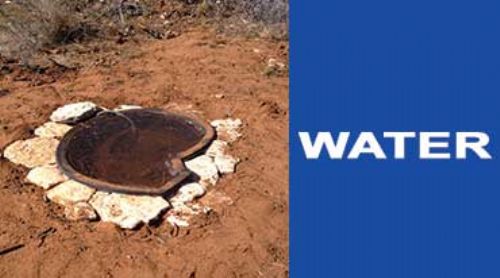Supplemental water is one of the seven activities you may use to qualify your property for the wildlife management use valuation.
What are the water sources for your wildlife? Keep in mind you have to take into consideration animals other than the deer or our feathered friends. For the small reptiles or mammals, a water source one hundred yards from where they live is like trekking across the Mojave desert. You catch my drift! So place your water sources appropriately.
Sources of water for wildlife are:
- Drinking water = this could be from creeks, stock-tanks, bird baths, pooled water on the ground, livestock troughs just to name a few sources.
- Metabolic water = this is water obtained by the animals breaking the foods they eat down (in other words -digestion) into their chemical components.
- Preformed water = which is contained within a food source itself. Songbirds get their water from the water held within worms, grubs, insects and various plants.
Adding sources of water will benefit you greatly in that you will see more wildlife but most importantly you will be saving lives by making water more accessible via the methods shown below.
Feeling ambitious and want to build your own water table?
I have included a calculation to use when you build a water table for collecting rainwater:
To calculate the rainwater supply (in gallons) for your area, use the following equation:
rainwater collected (gallons) = rainfall (inches) x size of the catchment area (square feet) x a conversion factor of 0.623
Go to U.S. Climate data website by clicking here to see current rainfalls for your city.

Water is one of the most important activities and supplements you can place on your property especially if you have a large tract that has no water or limited water availability.
The example to the left is simple to implement, what this landowner did was run a line (buried) from his well source to the inside of the cistern.
What is wrong with this setup? First, there needs to be rocks and sticks placed on the outside of the cistern making a ramp to the top. The landowner needs to place chicken wire or an escape ramp inside the cistern bent down to the bottom of it and bent over the outside edge. This will allow any small animal or reptile an escape should they fall into water.

This setup is homemade and functional. Built with treated lumber, piping and a truck tire to hold his water pan. This table has a corrugated roof with a slant tied into a gutter system that is tied directly into his water container.
He has a pvc pipe from the container into a water bowl located inside the truck tire. This is a great setup, inexpensive and will do its job for your wildlife.
To make it better, the tire could have been buried into the ground (of course in the hill country that will take some work). The best why to make this more wildlife friendly is to pile stones all around the edge of the tire and instead of using the small water bowl find a bowl that will fit inside the tire and concrete it in, place a float valve in the bowl and voila you're good to go!
 For the landowner that wants to make building a water table real easy. This picture is another method of collecting rainwater.
For the landowner that wants to make building a water table real easy. This picture is another method of collecting rainwater.
To make this wildlife friendly, pile brush and/or stones on the outside, place chicken-wire bent over the outer edge of the tub and bend it down into the inside of the tub to allow any animals that fall in a way to get out.



